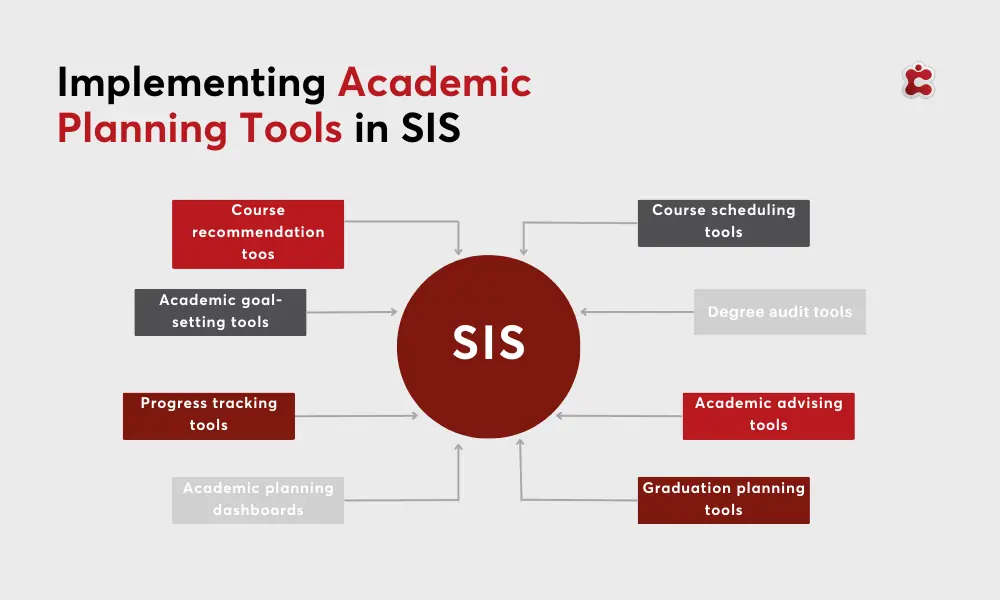Why do students leave, and how can you make them stay? Newly released statistics reveal that the United States grapples with a challenging 40% dropout rate each year. Bad retention in colleges represents a persistent challenge influenced by a variety of interconnected factors. Among these, academic struggles often intertwine with financial pressures, creating a formidable barrier to continued enrollment. Many students find themselves grappling with coursework demands while simultaneously juggling the financial burdens of tuition fees and living expenses. Moreover, without robust support systems in place, such as academic advising programs, students may feel further adrift in the college environment. Personal challenges, ranging from health issues to family responsibilities, can also complicate matters, prompting students to reconsider their educational pursuits. Student Information Systems (SIS) offer a solution to combat dropout rates by utilizing data analytics to identify at-risk students early on. This enables institutions to implement targeted interventions and support systems effectively.

Using Student Information Systems to Implement Personalized Learning Pathways
By tailoring the student experience to accommodate various learning styles, interests, and paces of learning, institutions can create a more inclusive and effective learning environment. One strategy is to utilize learning analytics to gather data on student preferences and performance. By analyzing this data, educators can gain insights into each student’s individual learning needs and adapt teaching methods accordingly. For example, if a student learns best through visual aids, instructors can incorporate more images and diagrams into their lessons.
Another approach is to offer a range of elective courses and supplementary materials through Student Information Systems that cater to diverse interests. This allows students to pursue subjects they are passionate about and engage more deeply with their studies. Additionally, providing flexibility in course scheduling and pacing enables students to progress at their own speed. Thus reducing feelings of frustration and feeling overwhelmed.
Incorporating interactive elements into the learning experience, such as quizzes, simulations, and collaborative projects, can significantly enhance student engagement. These activities cater to different learning styles by providing various avenues for students to engage with course content. This promotes further active participation, critical thinking, and a deeper comprehension of course materials. By incorporating such interactive components, educators can create more meaningful learning experiences that resonate with students, leading to improved academic performance and a greater likelihood of continued enrollment.
Early Intervention Using Data Analytics
Using the data analytics features within Student Information Systems is important to identify at-risk students early on and implement proactive measures. By analyzing student data, such as attendance records, grades, and engagement metrics, institutions can pinpoint students who may be struggling academically or socially. For example, students who are consistently absent or performing below average may benefit from personalized tutoring or additional resources to help them catch up with their peers. This data-driven approach benefits students by addressing their specific challenges and promotes a culture of continuous improvement within educational institutions.
Additionally, data analytics can uncover patterns and trends that may indicate systemic issues within the institution. Such issues include gaps in curriculum or support services. These insights prompt institutions to refine their offerings, ensuring they meet diverse student needs effectively. For instance, the analysis might reveal certain demographics struggling with specific subjects, prompting curriculum adjustments. Similarly, if the data shows inequalities in access to support services, institutions can allocate resources more equitably to bolster student success.
Facilitating Academic Planning
Student Information Systems enable students to stay organized and focused on their academic goals. With the ability to view their degree requirements and track their progress in real-time, students can better plan their course schedules and ensure they are on track for graduation. This transparency creates a sense of accountability, motivating students to stay committed to their studies and persist through challenges.
These tools empower students to take control of their academic journey by providing comprehensive information about course offerings, prerequisites, and scheduling options. With this insight, students can make informed decisions that align with their interests, career aspirations, and personal obligations. By facilitating proactive planning, students can maximize their educational experience. Thus, ensuring that they enroll in courses that meet their needs and contribute to their long-term success. This level of autonomy leads to greater satisfaction and retention in their studies.
From the perspective of educational institutions, integrating academic planning tools into the SIS streamlines administrative processes. By centralizing academic planning functions within the system, institutions can reduce administrative burdens, improve data accuracy, and provide better support to students. Furthermore, centralization enhances data accuracy by ensuring that all academic planning information is stored and updated within a single system. This reduces the risk of errors that may arise when using disparate tools or spreadsheets.

Maximize Retention by Using Classter’s Student Information Systems
The biggest standout feature of Classter’s Student Information Systems is its comprehensive student profiles. These profiles enable educators to tailor learning experiences that meet individual student needs. By providing detailed insights into academic progress, attendance, and personal milestones, Classter facilitates personalized learning pathways.
Classter simplifies the enrollment process, ensuring a smooth transition for new students. From document management to course selection, administrative tasks are streamlined, allowing institutions to focus on providing the best possible educational experience for incoming students. This is directly correlated with positive retention rates.
The integrated academic scheduling feature is designed to streamline the process of creating and managing timetables for institutions. This technology allows institutions to easily input various parameters such as course offerings, faculty availability, classroom capacities, and student preferences. By utilizing advanced algorithms to optimize timetables, Classter’s SIS minimize scheduling conflicts whilst ensuring efficient resource usage. For students, this means having access to well-organized and balanced schedules that align with their academic goals and personal commitments.
Furthermore, Classter strengthens communication channels between students, teachers, and parents. By facilitating transparent and consistent communication, this system ensures that everyone involved in the educational process is informed, engaged, and connected. With a supportive network of stakeholders invested, an environment where every student’s potential is fully realized.
Student Information Systems Paves the Path for Long-Term Student Retention
The transparency offered by using qualitative Student Information Systems builds trust and reliability. These are crucial factors in uplifting an institution’s credibility. By offering personalized support and resources through this platform, institutions demonstrate their commitment to student development. Students feel valued and supported, which can significantly impact their decision to continue their education at the same institution for higher degree programs. Additionally, the convenience and accessibility provided by Student Information Systems contribute to a positive student experience, further strengthening their connection to the institution.
FAQ’s
Institutions can implement strategies such as offering personalized support, providing financial aid, and creating robust support systems like academic advising programs.
Classter’s SIS offers comprehensive student profiles, streamlined enrollment processes, integrated academic scheduling, and enhanced communication channels to support long-term student retention efforts.
SIS platforms analyze student data such as attendance records and grades to pinpoint students who may be struggling academically or socially, enabling institutions to implement proactive measures.






